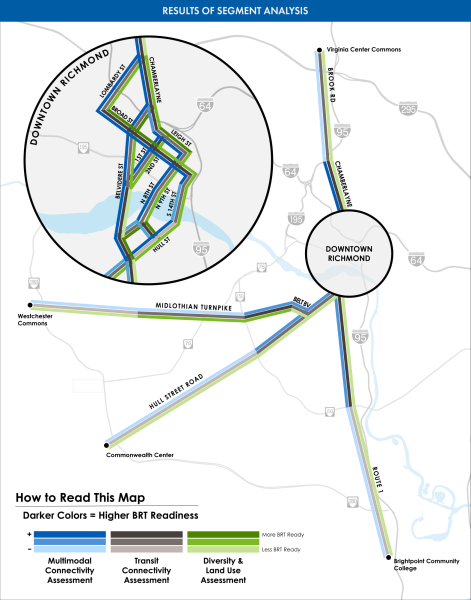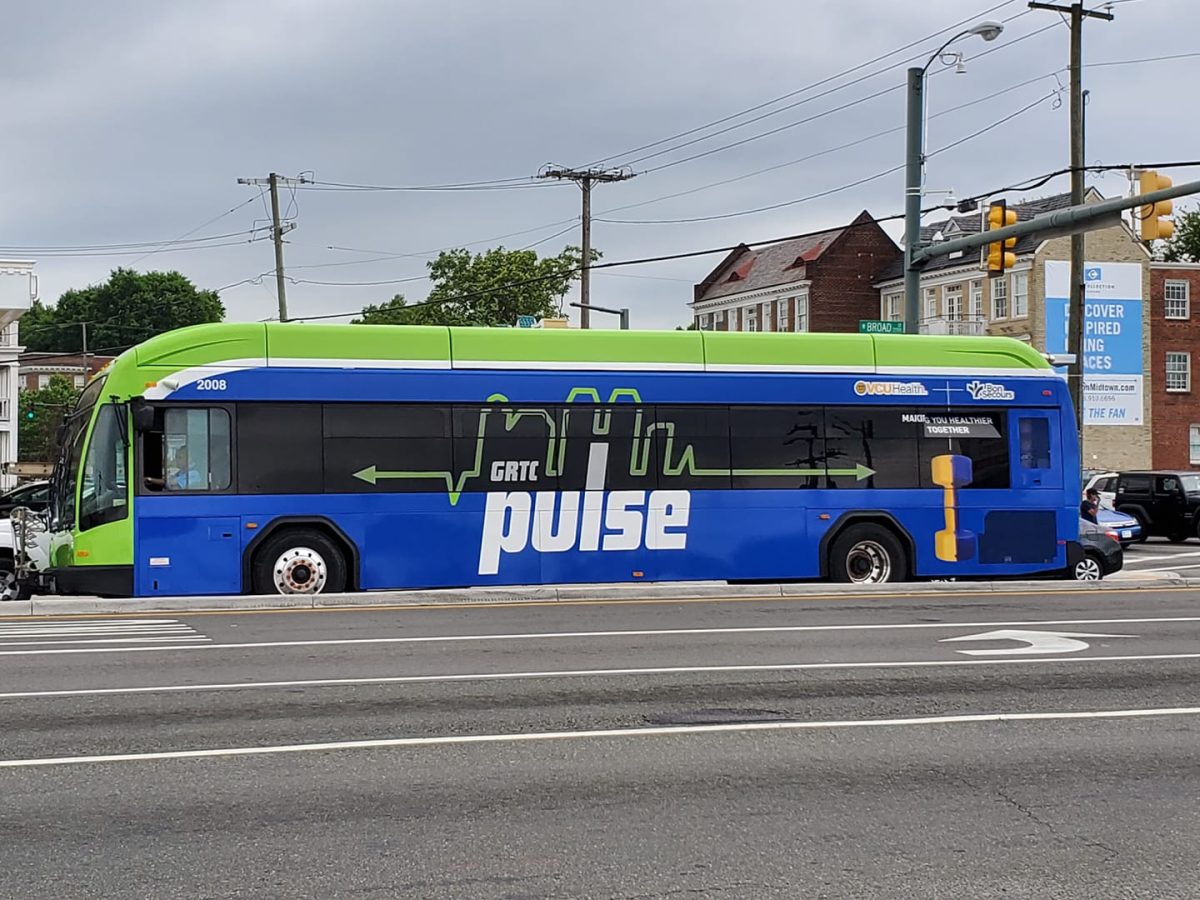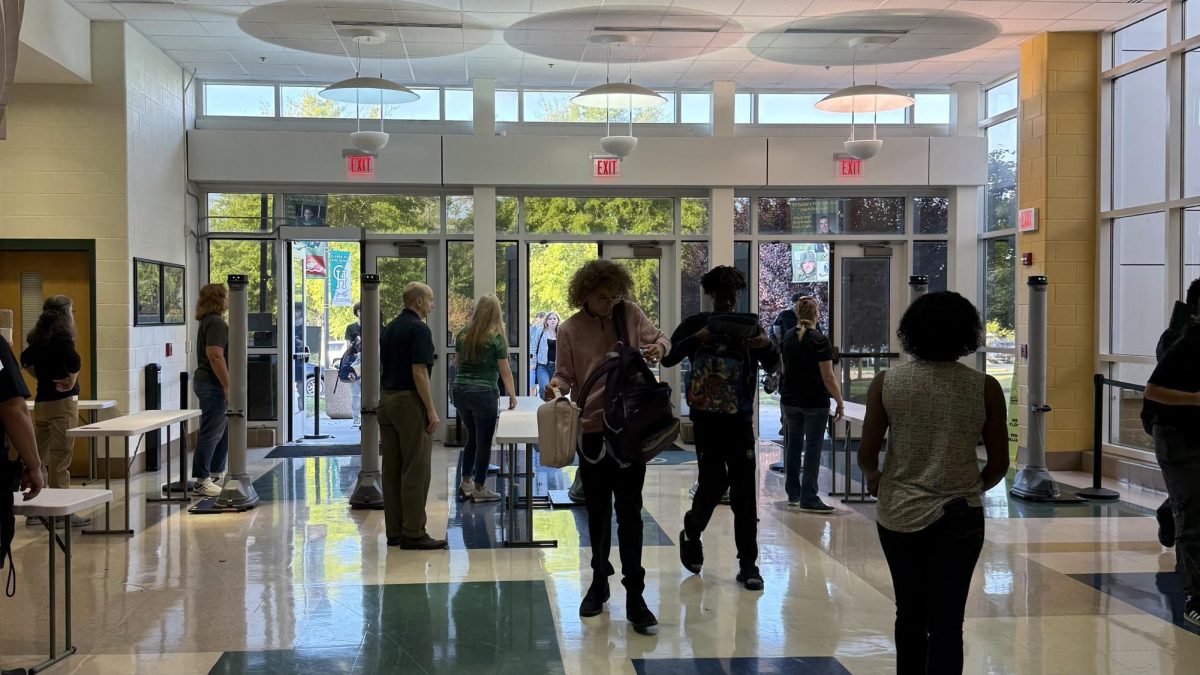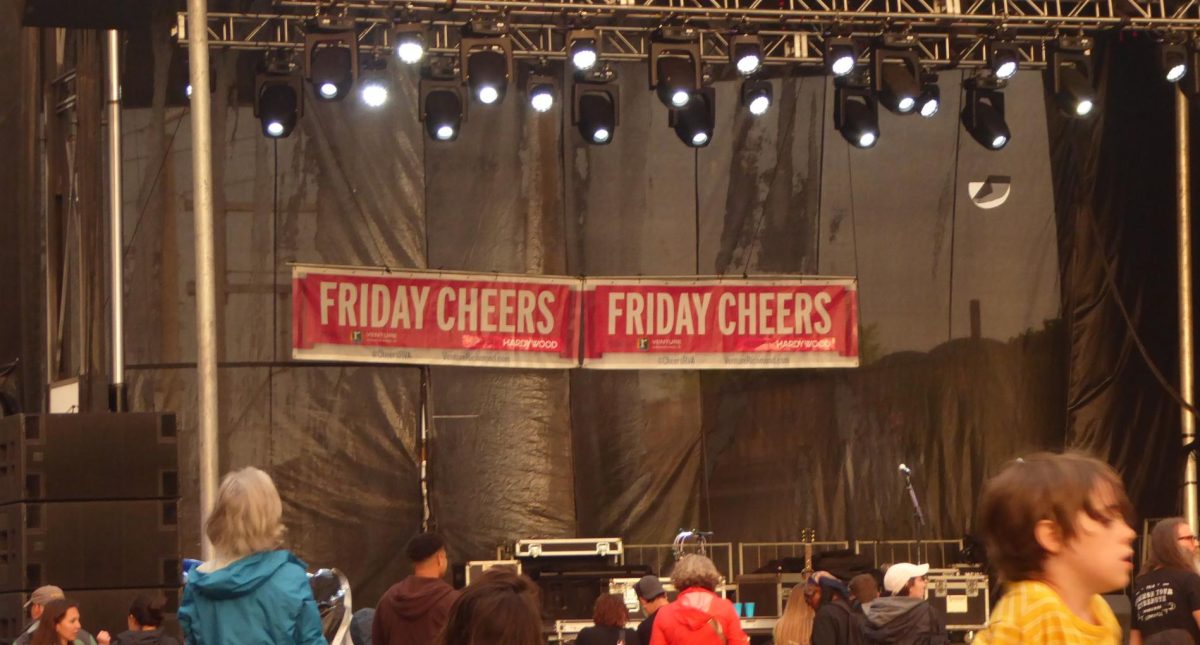In 2018, the Greater Richmond Transit Company (GRTC) launched its first Pulse Bus Rapid Transit (BRT) line. The BRT offers the positives of traffic signal prioritization, level boarding and dedicated lanes without the need for new and expensive infrastructure. Now, five years later, the GRTC is expanding its capacity with a second Pulse line. This new line allows connectivity from north of the city along Chamberlayne Avenue, through downtown and south of the river, into Chesterfield County.
The necessity of a new route is seen mainly in the ridership of the first BRT line. Ridership has been steadily increasing and has turned the BRT into the GRTC’s busiest bus line, with their Oct. 16 board of directors meeting reporting a Sep. ridership of approximately 152,000 riders.
The North-South BRT project is going to help meet the demand not fulfilled by having just one BRT line. Chief Executive Officer of the GRTC Sheryl Adams is excited to face the issue of too many riders.
“We’re so happy to see more full buses,” Adams said. “It shows the demand for transit service and explains why this project is so important. An increase in ridership is definitely an opportunity for growth.”
Building a new bus route is not as simple as drawing lines on a map and creating bus stops. Local communities, businesses and access points all need to be considered when planning out where a bus will take its passengers.

“A huge part of the first phase of the north/south Pulse was public engagement,” Adams said. “In addition to asking people what they’re looking for, our team and our consultants worked really hard to develop a list of criteria around equity, the potential of development, the need for improved transit and some other key issues”
By providing better access points to workplaces, shopping spaces and housing, businesses can expect an increase in customers thanks to the new bus route. This is already being seen with the existing Pulse line.
“Just look at the 126 unit apartment building on Lombardy which used to be a gas station,” Adams said. “[Also] the number of buildings going up around Scott’s Addition and its station — people want to be where transit is!”
With a project this big there comes an inherent pressure to get things right. This new Pulse line promises a lot, and Adams is taking every step possible to ensure her and her team deliver on that promise.
“The Broad Street Pulse has been so successful at helping revitalize the Broad Street corridor and leading to consistent ridership increases across the network,” Adams said. “We owe it to these communities along the north-south corridor to deliver the same kind of results.”
Through the use of low emission Compressed Natural Gas (CNG) buses, this new BRT line will simultaneously reduce traffic and lower carbon emissions by taking cars off the streets.
“More buses means fewer cars,” Adams said. “The north/south Pulse will run vehicles that are 60 feet long and can carry 120 people — the same length as four cars but with 114 more passengers. Put another way — we will be able to remove 80 cars worth of people in exchange for one bus.”
Residents can expect the first buses on the new Pulse line to begin operation sometime during 2029. Until then, the GRTC will be hard at work on ensuring they provide transportation that is fast, reliable and frequent.
“We’re at the very beginning of a very long process,” Adams said. “We’re going to take the same and do things right — but when this line opens it’s going to be a game changer. It will provide even greater access to jobs, shopping, food, etcetera.”
More information on future GRTC projects or updates on the north-south Pulse line.






